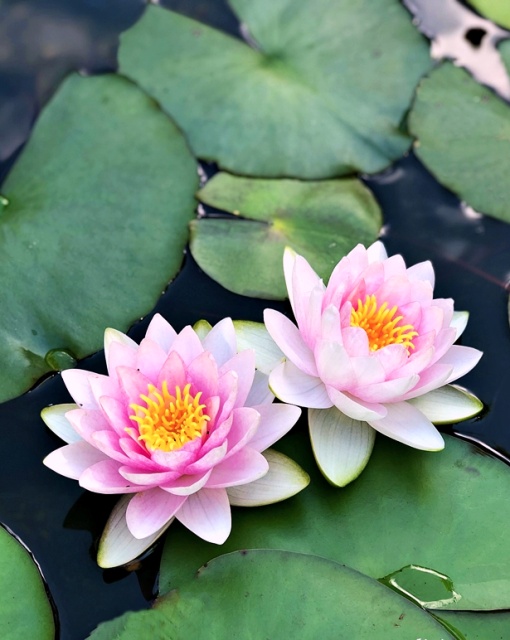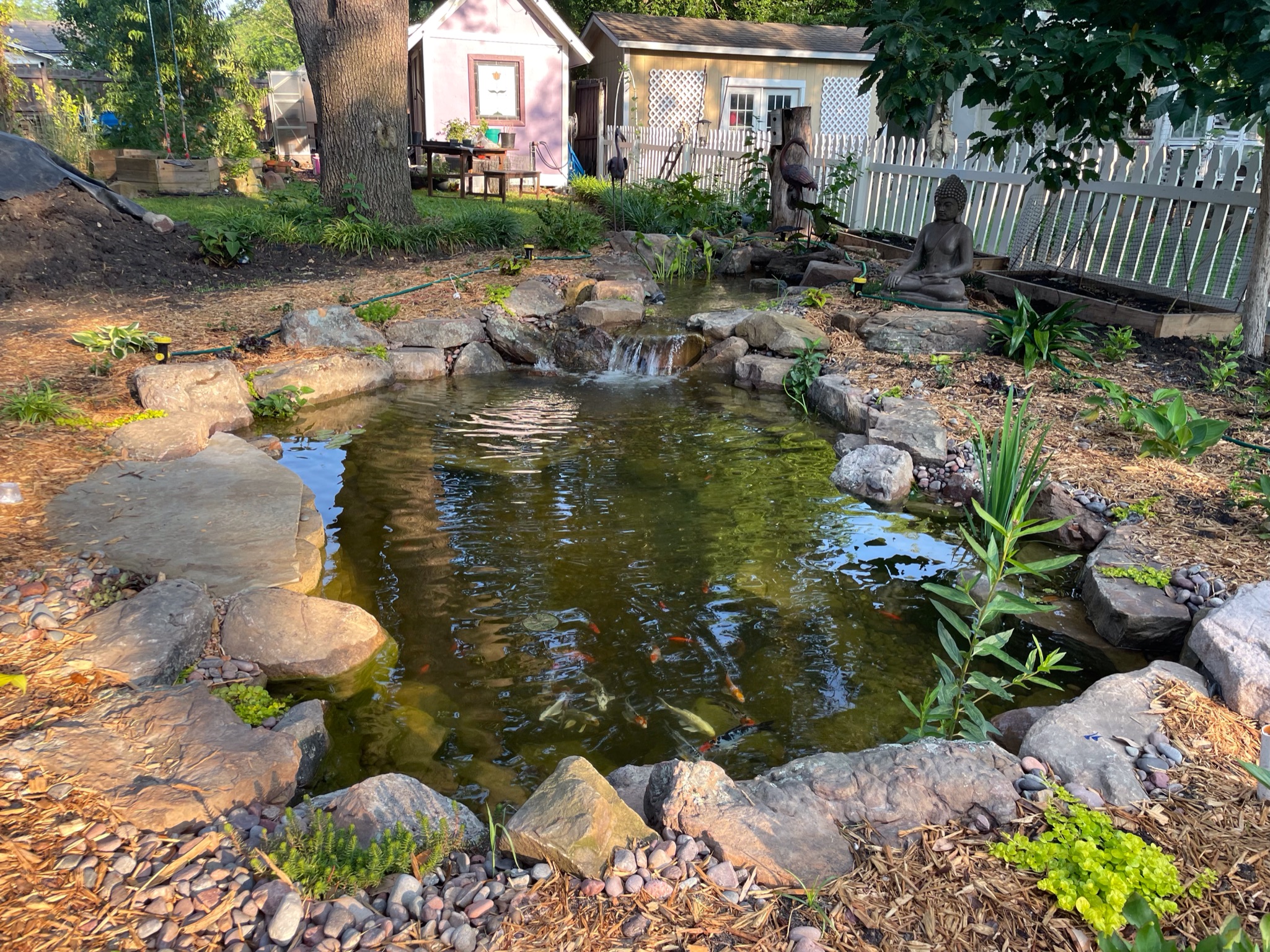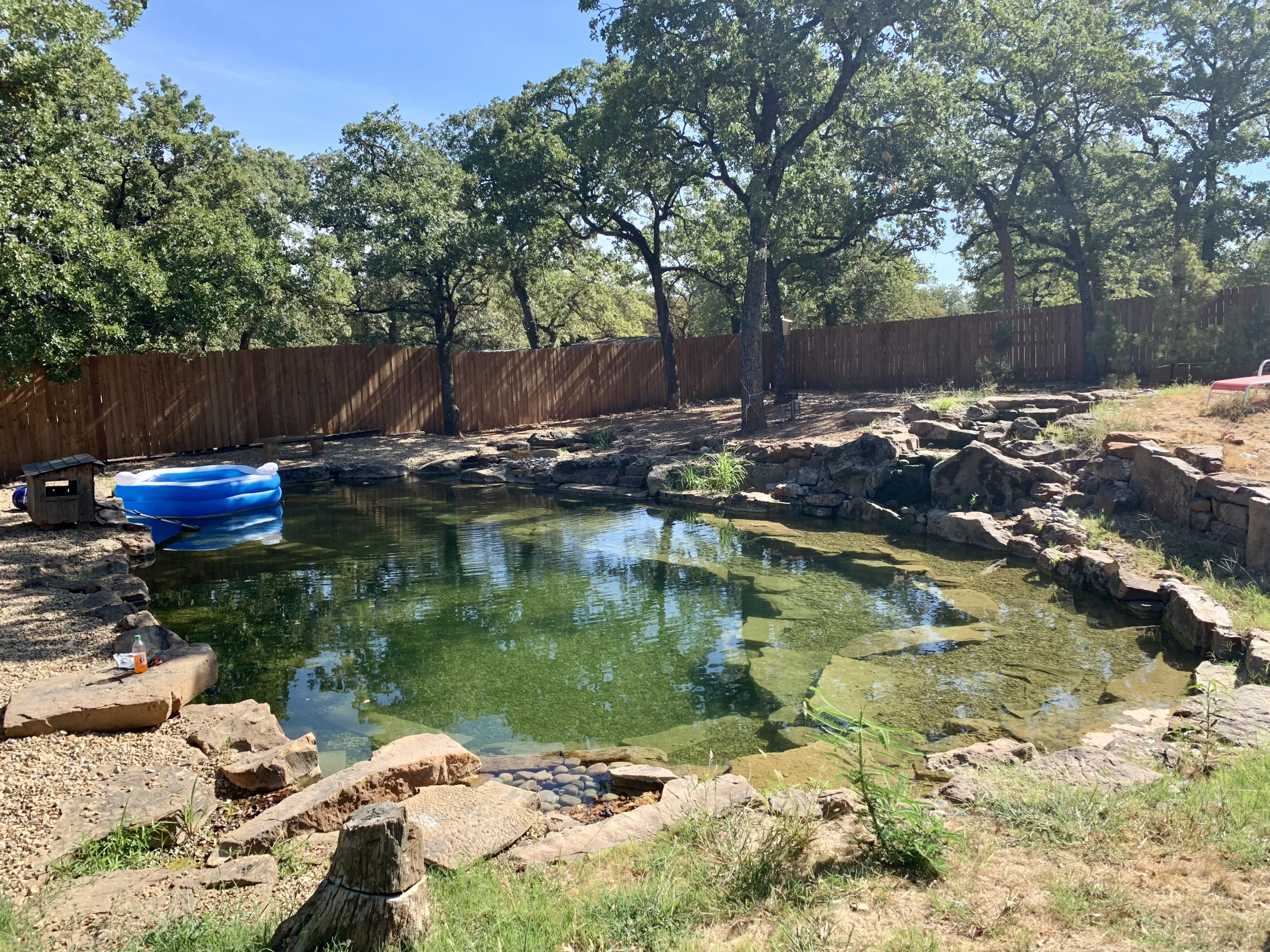
Waterlilies
Ready to add a beautiful flowering plant to your pond? Waterlilies are fun and easy to grow! They are a very popular choice among pond and water garden lovers with a wide array of colors to choose from! Here’s everything you need to know to get started growing waterlilies of your own…
Planting Waterlilies
Before placing a waterlily into either a container or a pond, it must first be properly planted into an aquatic planter. These special planters are porous in nature, flexible, and often come equipped with small handles made of rope.
The aquatic planter should be approximately 14” x 7” in size. Pour a generous amount of potting media into the aquatic planter, followed by the waterlily rhizome (roots). The rhizome should be planted at a roughly 45º angle with the cut end deeper in the soil and near the edge of the pot. The growing tip should project 3/4” above the surface of the soil.
Next, add a layer of washed gravel or small pebbles on top of the soil about ½” thick. This will help prevent the soil from escaping into the water once you set the aquatic planter into your pond. Here’s a trick: use black or dark gravel so that it is not easily visible in the water. Once your waterlily is planted properly into its aquatic planter, you are ready to rest it in your pond.
Container Water Gardening
But maybe you don’t have a pond or are opting to put your lily into a container instead. Not a problem! When placing a lily into a container instead of a pond, it is important to choose a decorative container specifically designed for container water gardening, such as a Patio Pond. With these special containers, there is no hole to fill in the bottom, meaning you do not have to seal the insides to eliminate leaking!
Choose a container at least 12-15” deep with a diameter of 24-36”. Fill the decorative container with water before placing the waterlily–along with its aquatic planter–into the container.
Last But Not Least
When carefully placing the aquatic planter with your waterlily into either your pond or decorative container, make sure to lower it slowly and at an angle while the bubbles escape. This combination of tilting the waterlily in its aquatic planter while lowering it into the water-filled decorative container will help you to avoid potentially damaging turbulence.
Final Advice…
Waterlilies have hefty appetites and will develop and thrive best if well-fed, so be sure to fertilize them well! Additionally, waterlilies need a minimum of 6 hours of sun, so be sure you give your potted container waterlily the light it needs. They will perform optimally in an area that receives at least 8-10 hours of direct sun. A few shade-tolerant waterlilies will prosper with as little as 4 hours of sunlight.





